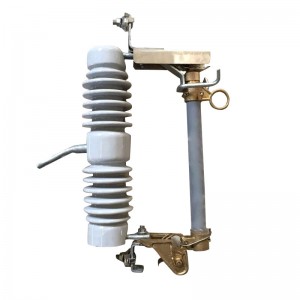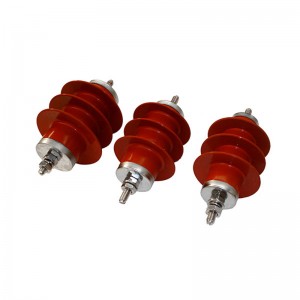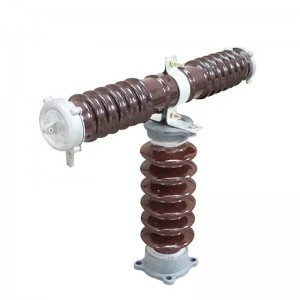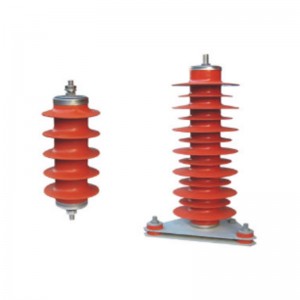RW12-15 Series Outdoor High Voltage Drop-Out Fuse
Product Structure
The product consists of insulators, upper and lower static and moving contacts and fuse tubes. The static contacts are installed at the upper and lower ends of the insulator, and the mounting plate is fixed in the middle of the insulator. The fuse tube is a composite material, which not only has good breaking capacity, but also And ensure high mechanical strength.
The product is fixed on the mounting frame by means of the mounting plate, and the fuse is connected in series in the power line during operation. During normal operation, the fuse with a twist buckle is installed on the upper contact of the fuse tube and is tightened by a pressure release cap equipped with a pressure release sheet. The fuse tail wire is pulled out through the fuse head tube, and the ejection plate is twisted and pressed close to the nozzle, and is connected with the lower contact. When the fuse is in the closing position, due to the downward thrust of the upper static contact and the outward thrust of the shrapnel, the contact of the entire fuse is more reliable. When the power system fails, the fault current will quickly blow the fuse. An arc is generated in the fuse tube, and a large amount of gas is generated in the fuse tube under the action of the arc. When the gas exceeds the predetermined pressure value, the release sheet is opened with the button head, reducing the pressure in the fuse tube, and a strong deionization effect is generated when the current crosses zero to extinguish the arc, and when the gas does not exceed the predetermined pressure When the value is reached, the release sheet does not act, and the strong deionized gas generated when the current crosses zero is ejected from the lower nozzle and the ejected plate quickly pulls out the fuse tail to extinguish the arc. After the fuse is blown, the movable joint is released, and the fuse tube falls rapidly under the pressure of the upper static contact and the lower shrapnel, plus its own weight, which cuts off the circuit and forms an obvious breaking gap.






